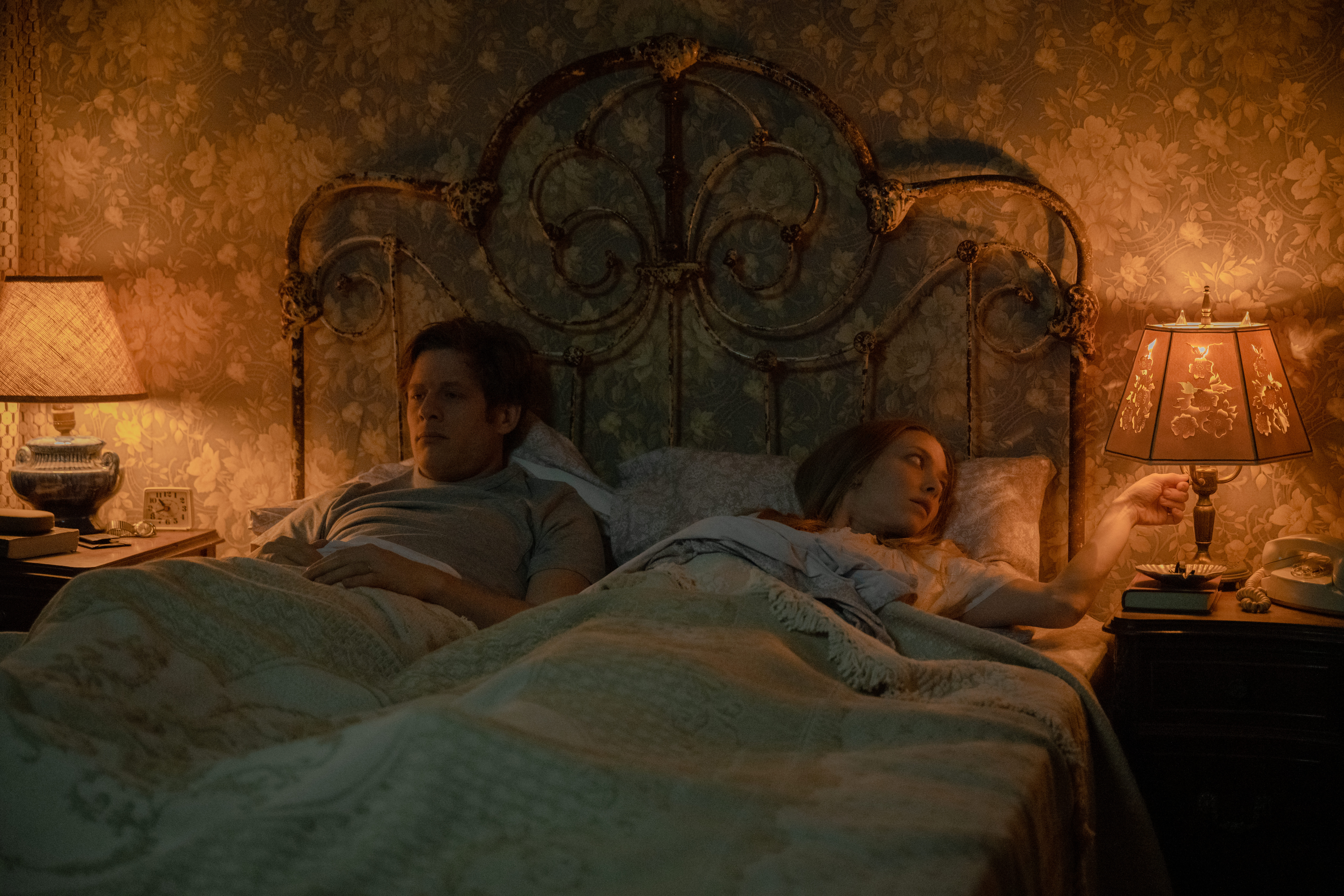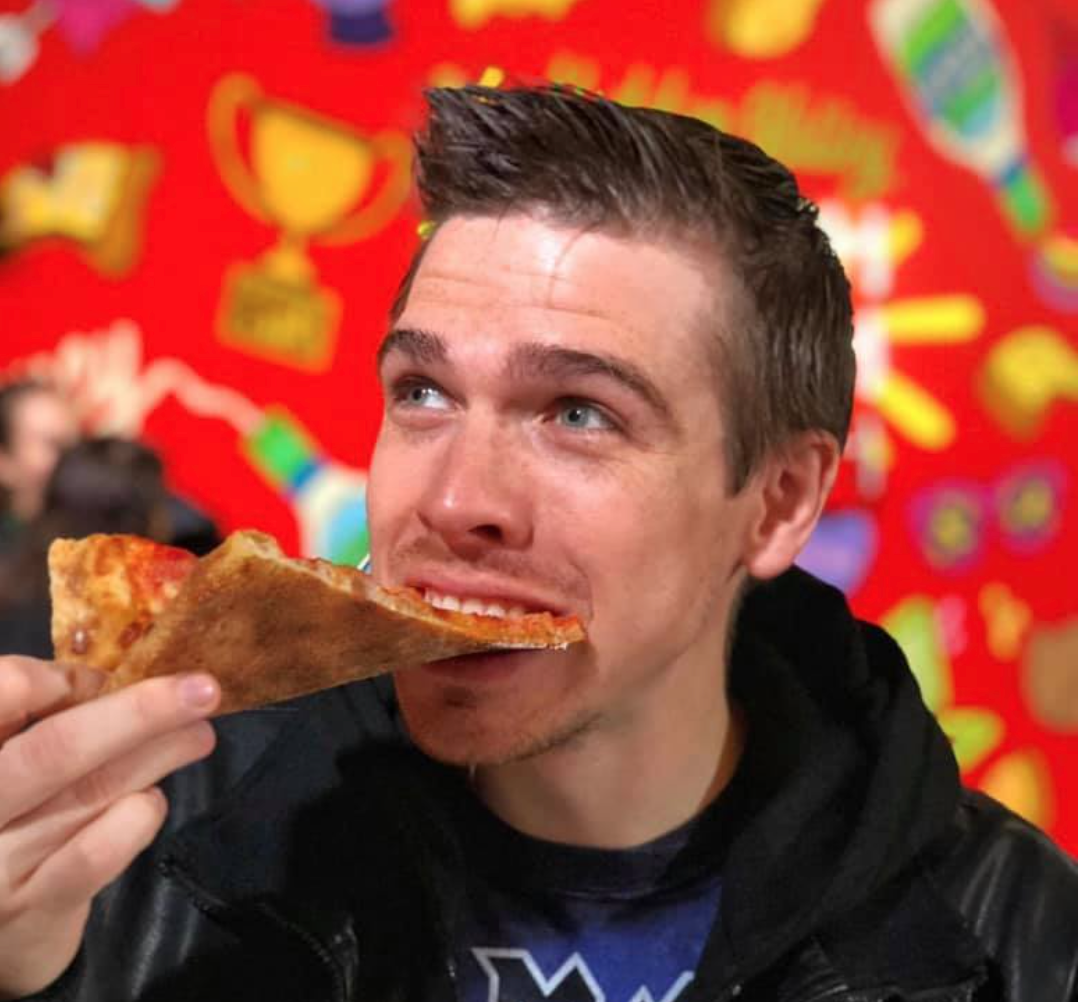What to Watch Verdict
'Things Heard and Seen' formulates a haunting that's driven my patriarchal unrest, except what's seen and heard by viewers takes the cheapest route by exploiting one woman's agony as the only brand of terror.
Pros
- +
💍 A fun game of hidden ghosts.
- +
💍 Amanda Seyfried stokes our sympathy.
- +
💍 James Norton sure sells what's asked.
Cons
- -
💍 Says something, but through bleakness that's oddly overwhelming.
- -
💍 Horror elements are muted.
- -
💍 Reveals its hand dreadfully early.
- -
💍 Not sure it speaks louder than violence for violence's sake.
The conventionality of haunted house thrillers makes Things Heard and Seen something that, on paper, stimulates beyond rocking chairs with invisible sitters. What horrors exist inside homesteads commonly boils down to ghouls with soul-sucking intentions—Paranormal Activity, The Conjuring, take your pick. By adapting Elizabeth Brundage’s acclaimed novel of the same name, writers and directors Robert Pulcini and Shari Springer Berman suggest that unrested entities haunt enclosures because negative energies beckon evil spirits. I’m not sure there’s been a more scathing condemnation of patriarchal oppression and toxic romanticism this year, told through the lens of 1980s machismo where women are one step above servants to their male-ignant masters. It’s so poignant, so frustrated, and alas, so unfortunately misinformed in how catharsis or empowerment emerge victorious from scalding narratives.
The union of George (James Norton) and Catherine Claire (Amanda Seyfried) started with entangled interests in undergrad art school, both creative minds pursuing their passions—until baby Fanny (Ana Sophia Heger) was born. Now Catherine is a mother first, wife second, and hobbyist artist with whatever few minutes she can spare. Meanwhile, George’s doctoral graduation leads to a professor position at Saginaw’s campus which means a family relocation from New York City to rural Hudson Valley. Once again Catherine sacrifices everything for her hubby, but George’s dashing portrait of intellect and compassion begins to crumble inside their new farmhouse. Maybe that has something to do with past owners vacating for a graveyard plot, which George initially hides from Catherine.
The biggest problem with Things Heard and Seen is how earnestly worrisome themes become so incomprehensibly weightless via horrendous scripted choices. At its core, narration screams about decades of instilled misogyny and how any female’s experience became about submission or being labeled as crazy, even “damned.” How men use relationships as a stranglehold to maintain control (Rhea Seehorn portrays a highlight role seeing through presentable bullshit), allowed to lie and cheat their way through life while homemakers raise children, feed armies, and play perfect hostesses. Using the 1980s as period placement juxtaposes generational flaws that still exist, and these motives sting like the dickens, especially as the definition of “haunted houses” comes into question. Pulcini and Berman are always at their best in these searing flareups—unfortunately, there’s far more time spent undercutting impact.
Things Heard and Seen accomplishes its analysis of gendered mistreatment by mistreating the hell out of Catherine. George’s polite-and-preppy introduction allows for horror’s transformation to overtake, as flirtatious and selfish attributes become enhanced by spirits of male-dominated yesteryears. In doing so, George is allowed to explore temptations and gaslight to his heart’s desire—all while the character of Catherine is broken beyond witful defenses. Scene after scene rubs our faces into Catherine’s powerlessness—full-frontal trauma and unknown betrayals alike considering Natalia Dyer’s attractive equestrian caretaker Willis—because James Nortan is so exceptional at playing manipulatively doe-eyed. Yet, it becomes a repulsive and futile act. George’s academic recognition of paintings starts to double for messages Catherine should fear, as high-society snobbery is used to belittle the rusted institution of marriage while George smokes dope or would rather medicate his daughter than soothe her night terrors.
George adheres to chauvinistic husbandry protocol, Catherine suffers the consequences. That’s most of what Things Heard and Seen has to offer.
I suppose that’s the paranoia and fear of it all? Horrors of humanity, horrors of the ignored, and experiential horrors that have thrived as textbook Americana staples. The issue remains, in haunted house flicks, there’s a culmination of events where tides sway—but considering Things Heard and Seen, its narrative anguish feels aimlessly adrift. The matrimonial injustice that takes place on-screen includes murder, hide-and-seek apparitions, and a time-machine consideration of longstanding male versus female mistreatment—however, frustration becomes the film’s most reliable quality. Pulcini and Berman tangle true crime grisliness with spectral inserts that never mean to terrify outright (greyscale ghosts become supporting characters, less villains), and hope to ascribe cinematic lyricism thanks to the supernatural debates between wine-swilling subjects whose museum references might need a bibliography.
Emanuel Swedenborg’s mystically theological quotes (spoken by an honorable F. Murray Abraham as George’s department head) about afterlives presenting new beginnings ring loudest, as a misguided attempt at valuing the deceased—possibly the script’s most tone-deaf assertion. Perhaps second to the unneeded trigger of Catherine’s eating disorder and its unremarkable “significance,” aka why is this needed?
The latest updates, reviews and unmissable series to watch and more!
I don’t disparage Things Heard and Seen because its promised elements of unearthly roommates are mere plot devices to something much more socially unspeakable. What’s wrong with this picture is the effort invested into making dreadful points by subjecting viewers to wretchedness with a cackle that beats all the proverbial dead horses well past disfiguration. Any projections of retribution and revenge are woefully muted, as the film ends with a shrug of, “men are evil, right?” Dialogue about innocent women who deserve something better pierces armor as intended, but storytelling detrimentally hyper-focuses on their unrelenting torture, provoked spirals, and burials without any suitable counterbalance. The divide between intent and execution is wider than the one between Heaven and Hell, two places that provide no comfort given how the film attempts to soften ugliness by proclaiming, “sure these characters are dead, but it’s where they rest that ultimately matters”—which, I dare say, ain’t the point.
- What's new on Netflix
- The best comedies on Netflix
- How to cancel Netflix
- How much does Netflix cost?
- The best Netflix shows
- The best horror movies on Netflix
- The top 10 movies on Netflix right now
Matt Donato is a Rotten Tomatoes approved film critic who stays up too late typing words for What To Watch, IGN, Paste, Bloody Disgusting, Fangoria and countless other publications. He is a member of Critics Choice and co-hosts a weekly livestream with Perri Nemiroff called the Merri Hour. You probably shouldn't feed him after midnight, just to be safe.


